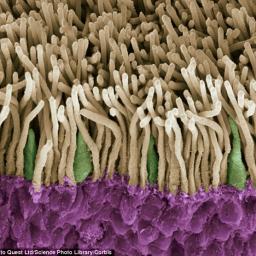Tetrachromatic Humans See 100 Times More Colors
 The same genetic mutation that makes people color-blind, can allow a small portion of women to perceive 100 times as many shades of colors as the rest of us, up to a potential 99 million. The mutations, when found on both X-chromosomes, can cause development of a 4th cone cell in a photosensitive layer in the back of the eye that responds to specific wavelengths of light. This increased visual acuity has been found most substantial in mid to long-wavelength, or "reddish", spectral components.
The same genetic mutation that makes people color-blind, can allow a small portion of women to perceive 100 times as many shades of colors as the rest of us, up to a potential 99 million. The mutations, when found on both X-chromosomes, can cause development of a 4th cone cell in a photosensitive layer in the back of the eye that responds to specific wavelengths of light. This increased visual acuity has been found most substantial in mid to long-wavelength, or "reddish", spectral components. Lots of animals are tetrachromats, including birds, fish, amphibians, reptiles and insects, but only a handful of human tetrachromats have been identified since 2012. This increased visual ability does come with a disadvantage of offspring having a high likelihood of color-blindness. Continued research may help scientists find a way to improve the vision of the (much larger) portion of the population that suffers from color-blindness.
More information on scientific studies of human tetrachromacy can be found here.
Seems like the rest of the diseases are back in force and our drugs are using their potency. Back on topic, mutations like this one fascinate me. Who knows what else there is to perceive out there if we could just alter our systems a bit. Or get bitten by a spider, or whatever.